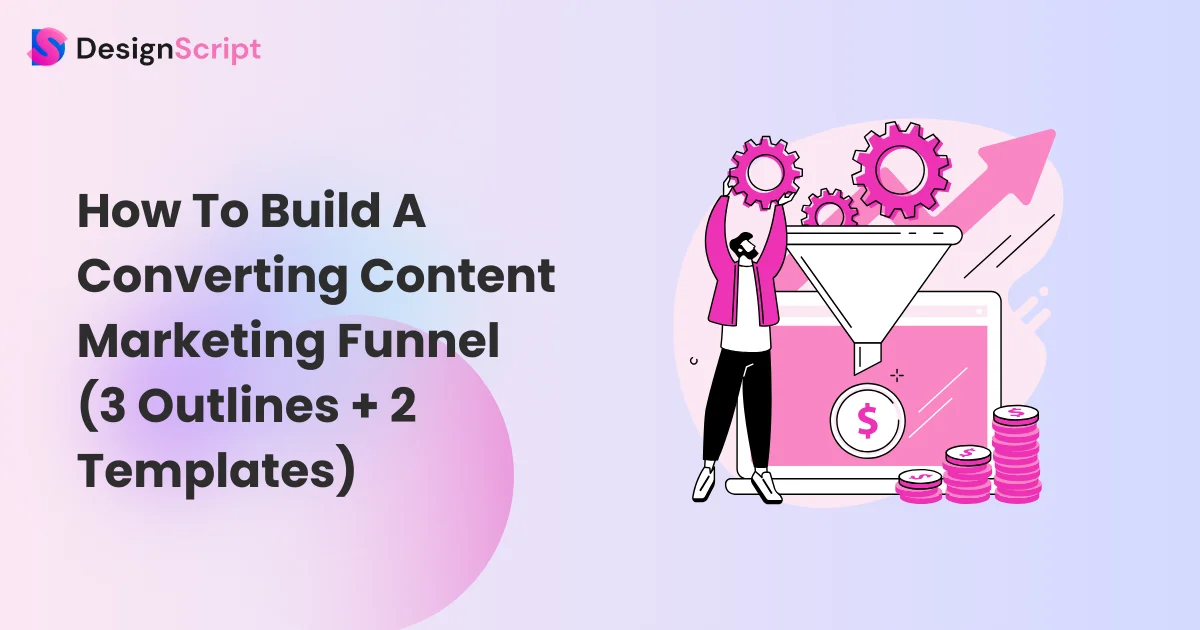How To Build A Converting Content Marketing Funnel (3 Outlines + 2 Templates)
Did you know that 87% of marketers create content marketing funnels for different customer journey stages?
You must also join the bandwagon and create the right content for all the individual journey stages for higher relevance. And this is where a content marketing funnel helps by streamlining the planning and execution of your content marketing strategy.
Implementing a content marketing funnel into your inbound marketing strategy will help you build a solid online presence and engage customers. And that will consequently get you broader traffic, attract more leads, and close more sales.
In this post we will provide you with a brief overview of all aspects related to content marketing funnels. And as the cherry on the cake, also it will provide you with content marketing funnel templates you can use!
Table of Content
- What Is The Content Marketing Funnel?
- How To Split The Content Marketing Funnel?
- Benefits of Creating A Content Marketing Funnel
- How To Build a Content Marketing Funnel?
- 1. Perform Keyword Research
- 2. Evaluate Your Existing Content
- 3. Create an Outline of Your Content Marketing Funnel
- 4. Create Top-of-Funnel Content (Awareness/Attention)
- 5. Create Middle-of-the-Funnel Content (Interest)
- 6. Create Bottom-of-Funnel Content (Desire and Action)
- 7. Gauge The Performance of Your Marketing Funnel
- Content Marketing Funnel Plan Just For You!
- Optimize Your Content Pieces With a Content Marketing Funnel Now!
- FAQs
What Is The Content Marketing Funnel?
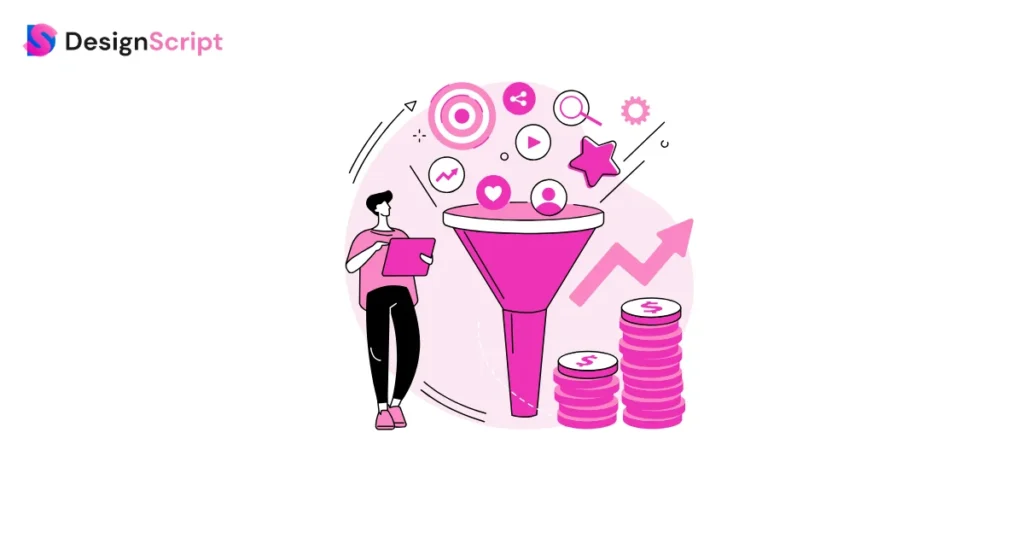
Let us start by answering the fundamental question – What is a content marketing funnel?
A content marketing funnel is a marketing system that helps a brand attract potential customers, and it also guides them through their overall customer journey, from the first interaction to finally making a purchase.
So, the content marketing funnel is a part of the content marketing strategy of a firm. Using its model, brands can create and target informative content at each stage of the funnel. As the user is different at each step, the content pieces designed for each stage would certainly have varying objectives.
This strategy is called a ‘funnel’ because you can visualize it as having a V shape. Many prospects enter the first stage but narrow down to fewer paying customers at the end of it.
How To Split The Content Marketing Funnel?
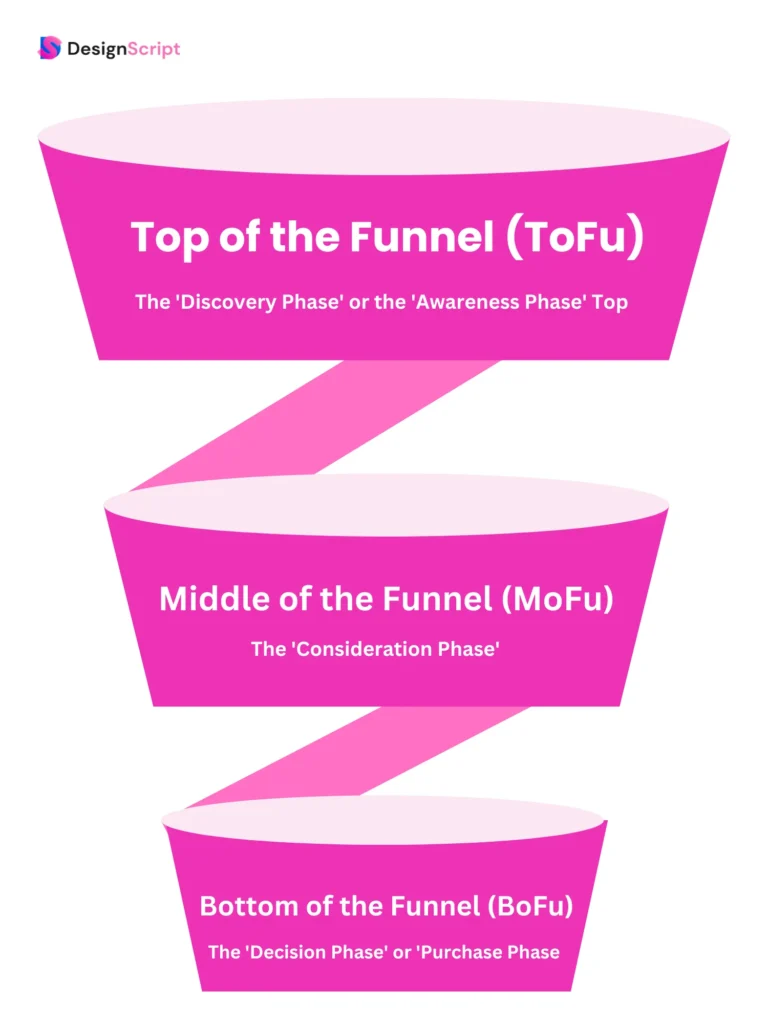
The content marketing funnel basically has three distinct stages. Additionally, all three stages vary in terms of intent and content creation. The three content marketing funnel stages are the following-
Top of the Funnel (ToFu)
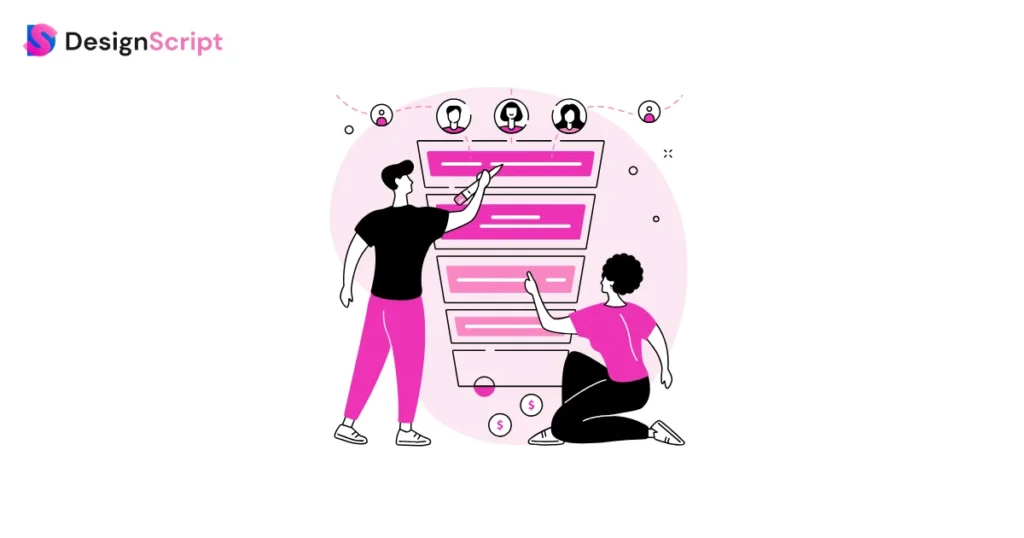
The main objective of the ToFu stage is to attract the attention of prospects. This is also known as the ‘discovery phase’ or the ‘awareness phase.’
ToFu focuses on generating brand awareness amongst a wider audience who might not be familiar with your brand. In this stage, you must target informative and educational content for your audience. This content will certainly help them get familiar with your brand and its products and services. Overall, ToFu content needs to be intriguing, eye-catching, and dynamic.
According to a survey, 95% of marketers create ToFu content.
Middle of the Funnel (MoFu)
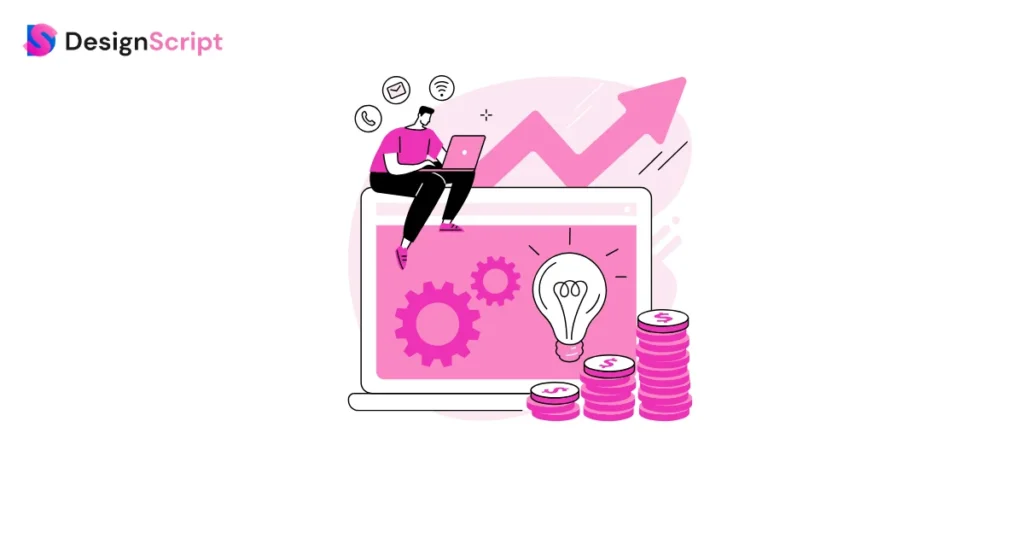
The main objective of the MoFu stage is to generate leads. This funnel stage is also known as the ‘consideration phase.’
During this stage, the prospects start to weigh their options and decide which of them suits their interests the best.
In this stage, you have to target helpful and knowledgeable content to your prospects and basically make them realize that you are the best option for them. It would help if you address your customer’s pain points and needs in your content at this stage, also you need to convince them that your product is the best solution for their problems. Basically, you have to give them in-depth information about its features and benefits.
It is certainly worth noting that 86% of marketers create MoFu content.
Bottom of the Funnel (BoFu)
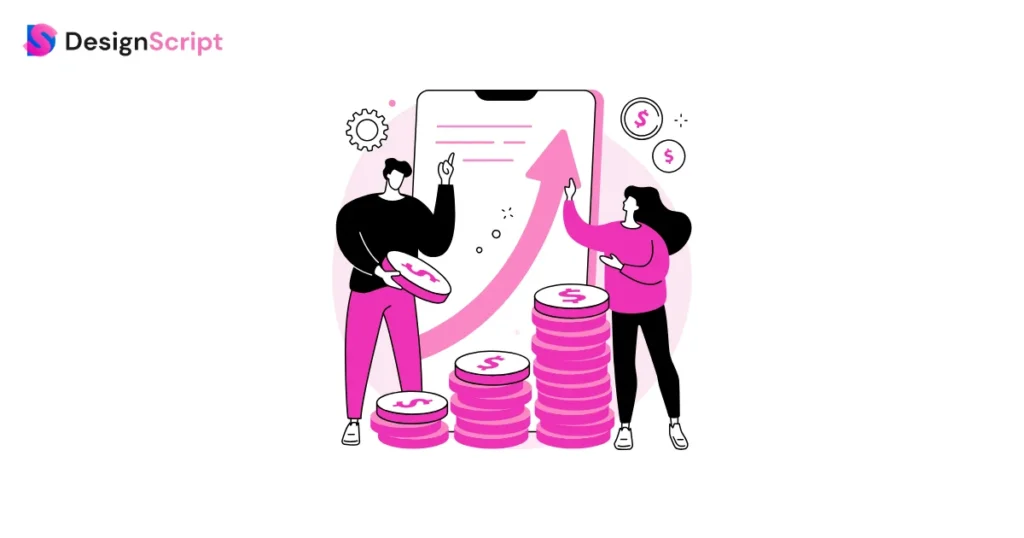
The main objective of the BoFu stage is to close sales and drive payments. This stage is known as the ‘decision phase’ or ‘purchase phase.’
The customers are at their closing stages during this phase. They are confident in their decision and want to buy the product from you. Basically, the information they want at this stage is how to purchase the product and what kind of customer support you will provide them.
The content at this stage basically needs to incentivize the customer to buy the product from you. This can mean giving them trial offers, purchase discounts, extra coupons, or even membership packages.
76% of marketers target their content towards the BoFu stage.
Benefits of Creating A Content Marketing Funnel
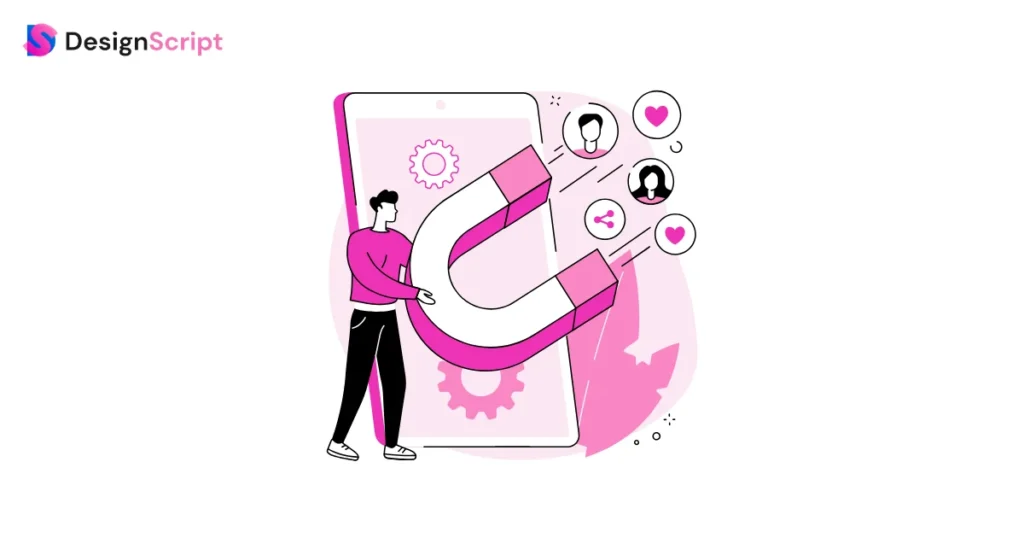
There are many benefits of creating a content marketing funnel. Some of them include the following:
Understanding Your Buyer’s Journey Better
A detailed content marketing funnel will allow you to keep track of your customers’ journeys. If a potential customer exits the funnel at any stage, you can retrace their steps and figure out what made them leave. This analysis will basically help you fix any loopholes or setbacks in your content marketing strategy.
Optimizing Your Content Marketing Strategy
A content marketing funnel will provide you the structure for planning, creating, and publishing your content effectively. This will help you to optimize your content strategy. How?
The content marketing funnel divides the customer’s journey into distinct stages, each of which has unique levels of customer awareness and interest. This helps you craft specific types of content to target the customers at each stage.
And this, in turn, optimizes your buyer’s sales funnel journey through the most relevant and compelling content at every point. Obviously, this optimization process ensures that more of your prospects go on to make the final purchase.
How To Build a Content Marketing Funnel?
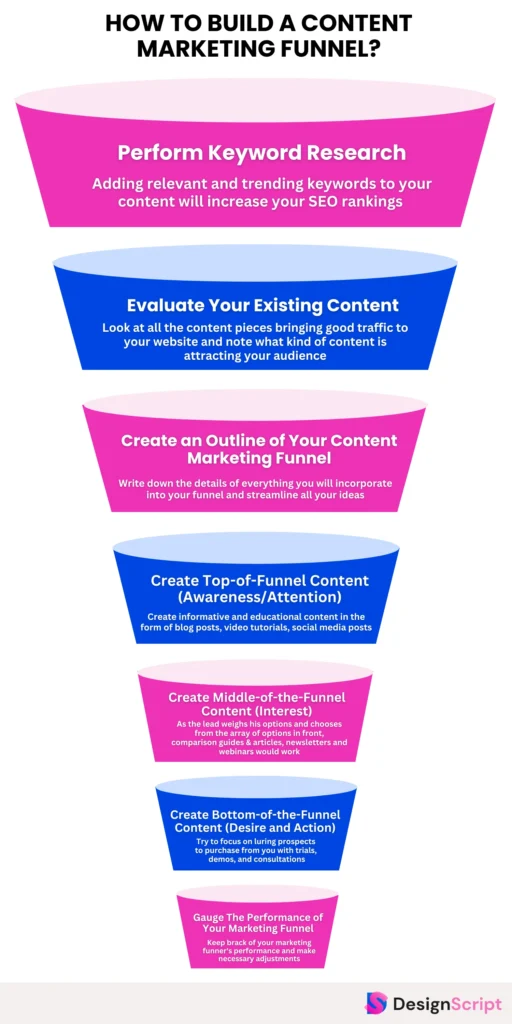
Want to know how to build an effective content marketing funnel? It certainly does take a lot of time and resources. You need to plan your content marketing strategy to complement your funnel. Here are some pointers that you can apply to build both B2C and B2B content marketing funnels-
1. Perform Keyword Research
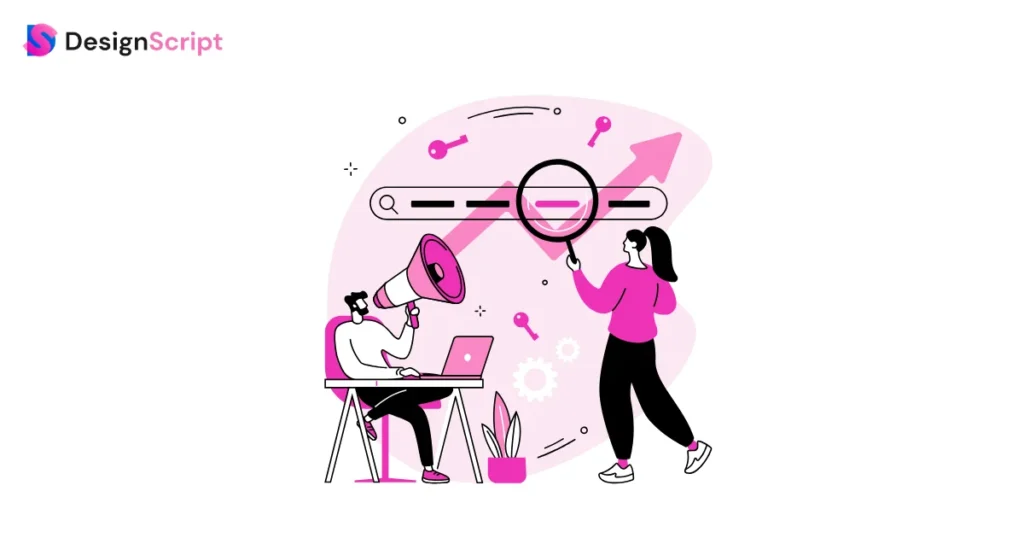
The first and foremost step would be to thoroughly research all the keywords you can use for your content pieces. Keywords are essential for bringing more traffic to your content. They also get you more prospective customers.
Adding relevant and trending keywords to your content will increase your SEO rankings. As a result, visibility on search engine result pages will increase, and more people will come across your brand. This will certainly generate awareness and spark interest in the minds of your consumers. Keywords are beneficial during the first stage of your funnel – the ToFu stage.
2. Evaluate Your Existing Content
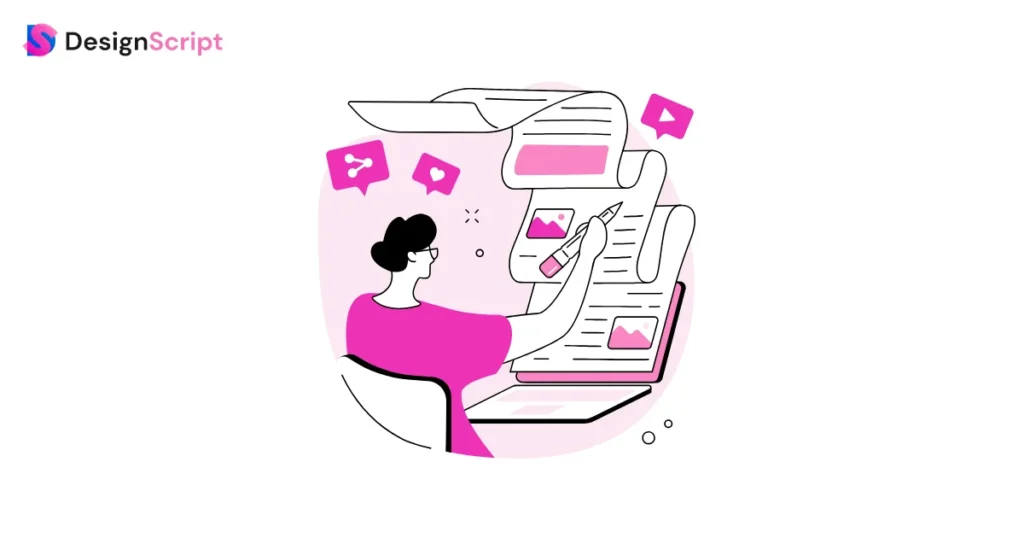
After gathering a list of keywords, the next step is to evaluate your existing content. By analyzing your previous works, you need to figure out what improvements you can make in your content pieces.
Look at all the content pieces bringing good traffic to your website and note what kind of content is attracting your audience. Similarly, look at all the content pieces that are not doing so well to make improvements in them.
Structure your new content according to all the research you have done. You can also repurpose your old content and publish it again after making the necessary changes.
3. Create an Outline of Your Content Marketing Funnel

Next, you need to map out your entire content marketing funnel. Write down the details of everything you will incorporate into your funnel. This way, you can streamline all your ideas and initiatives in an organized manner. Overall, you need to formulate the rest of your funnel and implement it as per your outline. Also, try to determine the type of content you will write for all three content marketing funnel stages.
4. Create Top-of-Funnel Content (Awareness/Attention)
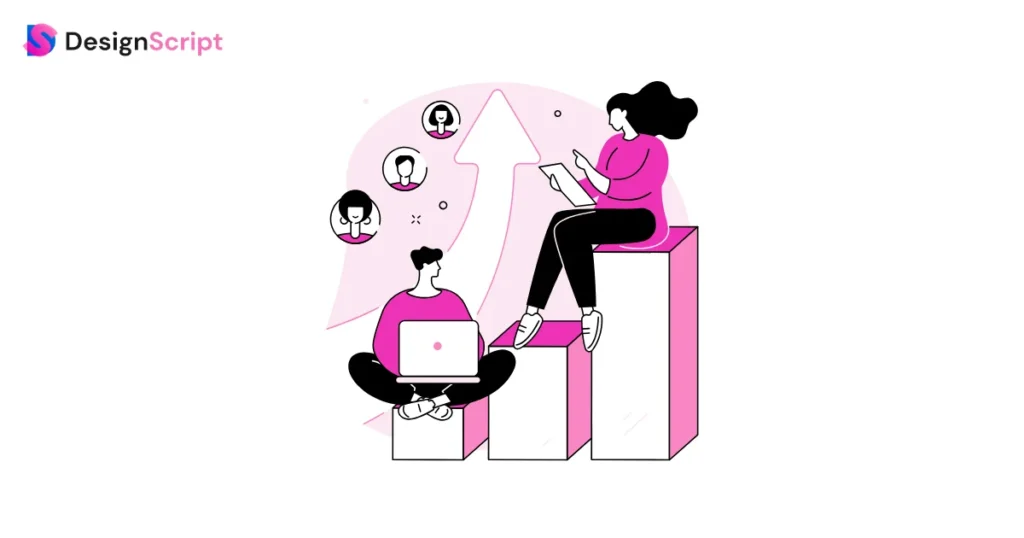
The ToFu stage creates awareness about your brand and attracts new customers. At this stage, the buyer is aware of their pain points and is trying to find solutions for them, also this means that the content you need to make for this stage should be informative and educational. You also need to incorporate a lot of SEO keywords so that your content ranks higher in search results and people discover you easily.
Your content needs to attract your audience and create engagement. Only then will they proceed to the next stage. You must center your content around your target audience’s questions and interests. Doing so would increase your chances of discovery. And this is the stage where you should target most of the content – as you can cast a wide net over all the prospects coming across your content pieces.
Best content types for ToFu:
The best content types for this stage might be the following:
- Blog posts: Blogs are one of the best ways to capture a person’s attention. Nowadays, many people read blog posts to try and find solutions to their problems. Therefore, they should be educational and should address every potential question in your customers’ minds. Try our free blog post generator to create converting blog posts.
- Video Tutorials: Visual content engages people more than written content. You can make video tutorials to answer the questions of your customers engagingly. Videos are certainly a more effective means of garnering attention since many people watch videos on YouTube to get information.
- Social Media Posts: Social media users are increasing exponentially in numbers. Thus, social media platforms have become a great way of attracting attention. You can create posts related to your brand and products and post them on social media. Social media posts certainly have the potential to get a lot of engagement from unique viewers if you deal with your cards right.
5. Create Middle-of-the-Funnel Content (Interest)
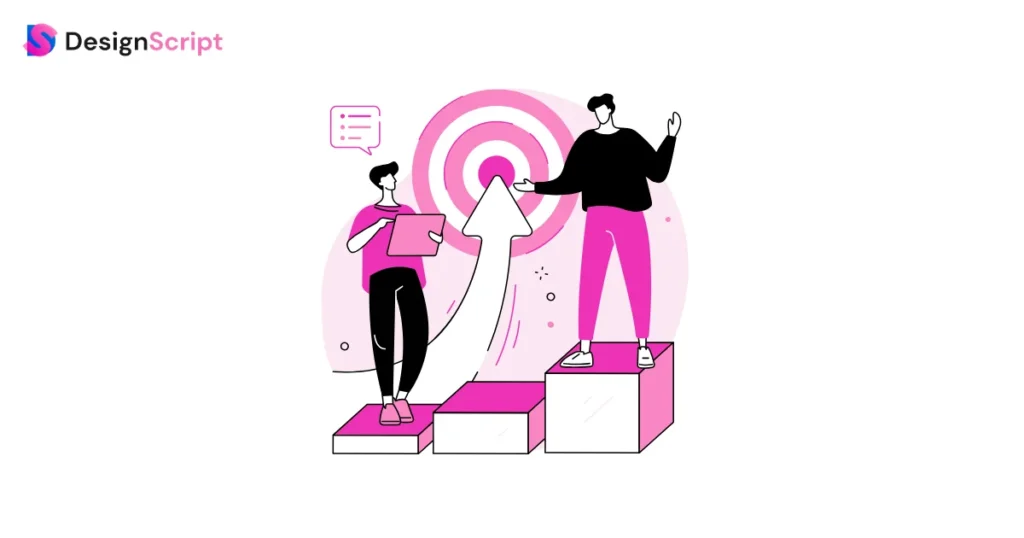
The MoFu stage is to convince your prospects that your products fit them best. At this stage, the buyer is already aware of your products. Now he is weighing his options and choosing from the array of options in front.
You need your content to answer their questions and help your prospects understand why your product is better than your competitors’. This can mean drawing up comparisons of your product with other products or making case studies. You can also answer research-based questions.
Best content types for MoFu:
The content types for this stage might be the following:
- Comparison guides and articles: Comparison guides and articles should make your customer understand all the ins and outs of your product. You should discuss product details, brand comparisons, and detailed reviews. Basically, write these articles in an unbiased way and highlight the pros and cons of each product you are reviewing.
- Newsletters: Newsletters can be a great way of keeping in touch with your customers and providing them with further information about your products. Your newsletters should be engaging and dynamic. Additionally, do talk about product updates, new launches, or product collaborations. Overall, newsletters are a great way to pique interest while also providing information.
- Webinars: Webinars are an effective way to share educational insights about your product. People understand more through videos than they do through write-ups. Webinars allow you to provide an in-depth analysis of your products. Moreover, you can even bring industry experts to share their knowledge with your audience.
6. Create Bottom-of-Funnel Content (Desire and Action)
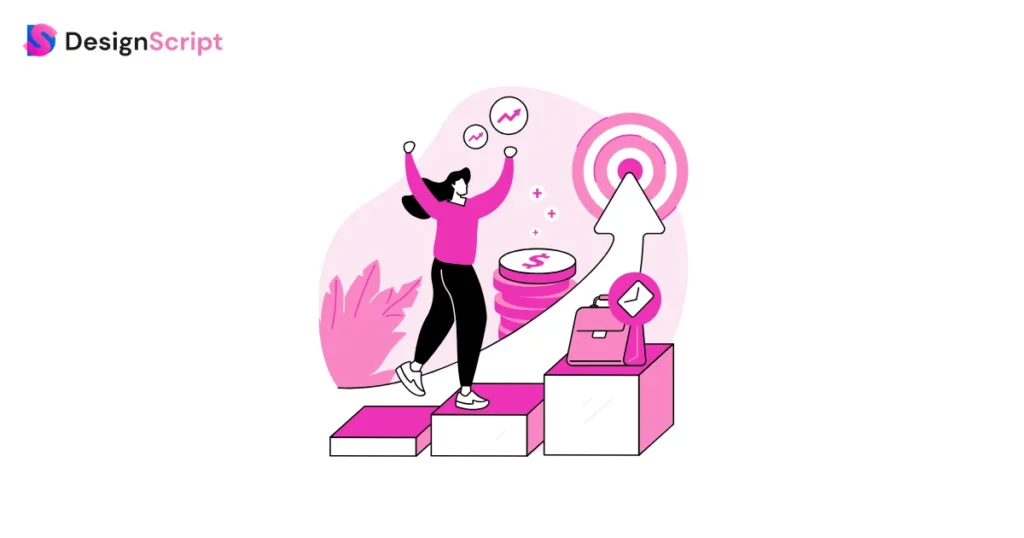
The BoFu stage is at the bottom of the funnel. Your prospects gather the last bits of information they need before making their purchase decisions. Try to focus your content on luring them to purchase from you.
Indeed, this stage goes even beyond the purchase. You need to maintain positive relationships with your clients so that they keep coming back. This means ensuring that your customer support is top-notch.
The content for this stage can include trials, demos, promotional offers, discount coupons, or even membership packages.
Best content types for BoFu:
The best content types for this stage might include the following:
- Live Trials and Demos: You can give your prospects trial offers to test your products before making their purchase. Ensure that your product trial highlights the value of your products effectively. Apart from trials, demos can also prove to be useful at this stage of the funnel. You can use demos to circulate information about how to get the most out of your products.
- Consultation Offers: Provide consultation services to your prospects. These consultations can certainly get rid of the doubts in your prospects’ minds. Give them all the information they need and solve all their queries.
7. Gauge The Performance of Your Marketing Funnel
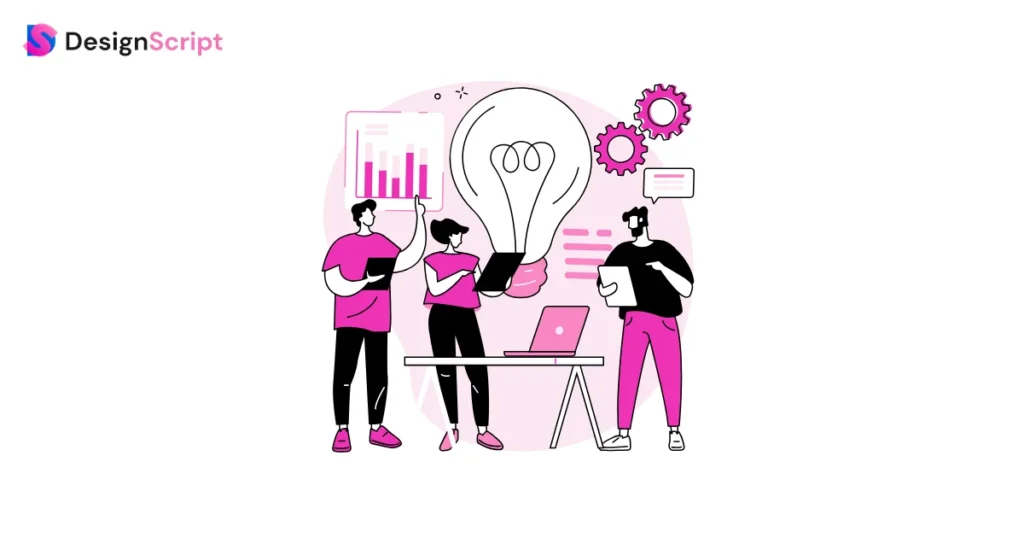
This step comes after you have implemented your marketing funnel. It is important to keep track of your marketing funnel’s performance and make necessary adjustments.
Content Marketing Funnel Plan Just For You!
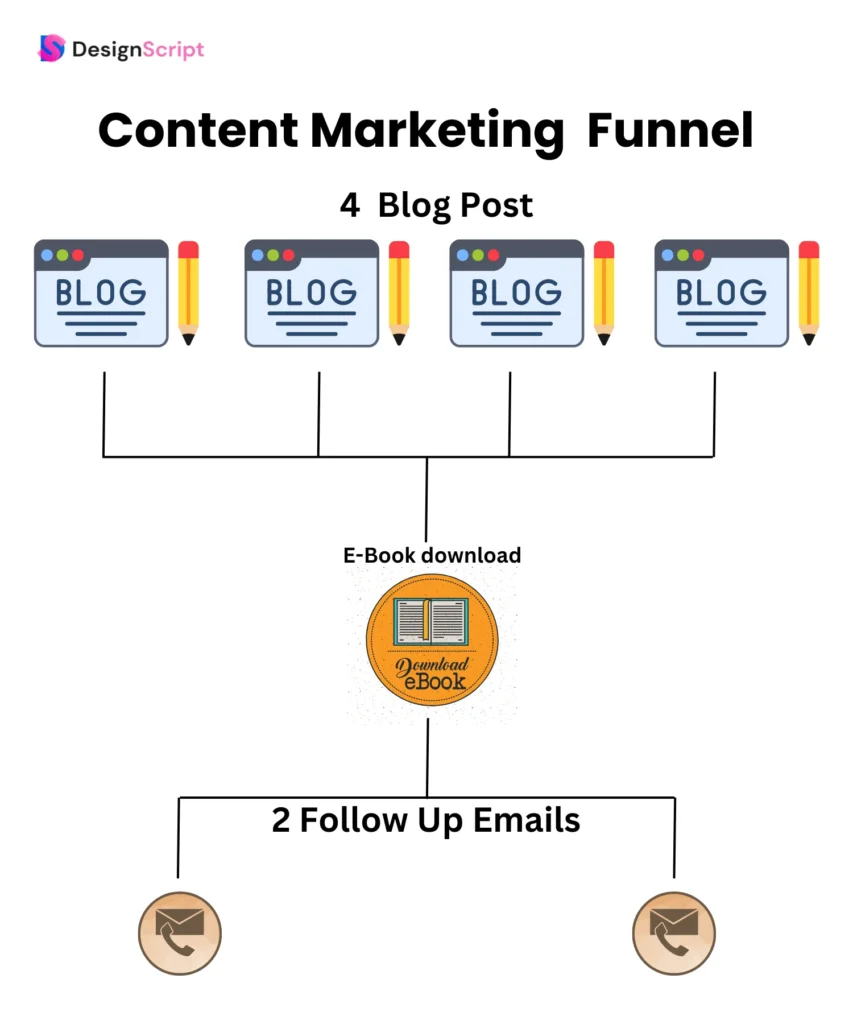
Here’s how you can set up your content marketing funnel in no time. Start with 4 blog posts moving down to an ebook, and 2 follow-up emails.
Funnel
- 4 blog posts
- E-book download
- 2 follow up emails
Create Blog Posts
To write the blog posts, you need to do the following for each post,
Keyword research – Perform keyword research to find the primary keyword and secondary keyword for your blog. Use the primary keyword in the blog’s meta description, URL, title and body.
Structure – Create a block structure that is easy to read with several subheadings.
Images – Infographics, illustrations, graphic images to make your blog visually appealing.
Catchy headline – The title of your blog has to be attention-grabbing and have your primary keyword as well.
Blog Post Outline
Title-
URL –
Primary keyword-
secondary keyword-
Meta description-
Body of the blog
Intro -150 to 200 words
Subheadings :
1st – 200 to 250 words
2nd – 200 to 250 words
3rd – 300- 350 words
4th – 300-350 words
Final thought – 100-150 words
The number of subheadings depends on the structure of your blog.
Create Ebook
You would require the following for the ebook:
- The e-book content
- Images
- Landing page
Outline for the Ebook
While the structure of your ebook depends on what your content is about. Here is an outline to give you an idea,
- Introduction of 150 to 200 words
- Table of contents
- Heading followed by content between 200 and 350 words
- Add graphs, statistics and images where relevant.
- Add a clear CTA
Landing Page Outline
Heading – Mention the title of your ebook
Subheading – Explain how useful the ebook is
Bullet points – Mention what the ebook has in store for the reader
Email form – Gather basic lead information
Follow Up Emails
Create an email sequence of 2 follow-up emails. Provide the ebook and ask them if they have any questions and also Follow up and offer to connect with them.
Email Template 1
Hi {{First-Name}},
Good job! Now that you have downloaded the ebook {{ebook_name}}, it will help you solve {{problem}} and get rid of {{pain_point}}.
If you have any questions about the ebook, please feel free to ask. You only need to reply to this email, and I’ll get back to you.
Happy reading!
Thanks and Regards,
{{Your_name}}
Email Template 2
Hi {{First-Name}},
Just a reminder that you have downloaded the ebook {{ebook_name}}. If you have not read it so far, you are missing out on something really important. It has a lot to offer and can help you to overcome {{pain_point}}.
Since you downloaded it, I understand you are looking for a solution for {{pain_point}}.
I will be glad to discuss this with you in detail. Also, please let me know the software you currently use for {{pain_ point}}.
I’ll be waiting for your reply!
Thanks & Regards,
{{Your_name}}
Optimize Your Content Pieces With a Content Marketing Funnel Now!
So, we gave you a rundown on all aspects of the content marketing funnel to help you, also understand its meaning, components, and implementation in detail.
As you saw, a content marketing funnel basically integrates your content marketing efforts with your sales funnel to create an impactful content strategy. And this helps you plan, create, and publish content to target every stage of your prospect’s journey.
The final result is an exponential rise in your customer engagement, brand image, conversions, and sales!
So, why wait now? Go ahead and utilize our pointers to a high-converting marketing funnel for your business! Also, remember to use our time-tested template to devise an unbeatable content funnel strategy.
FAQs
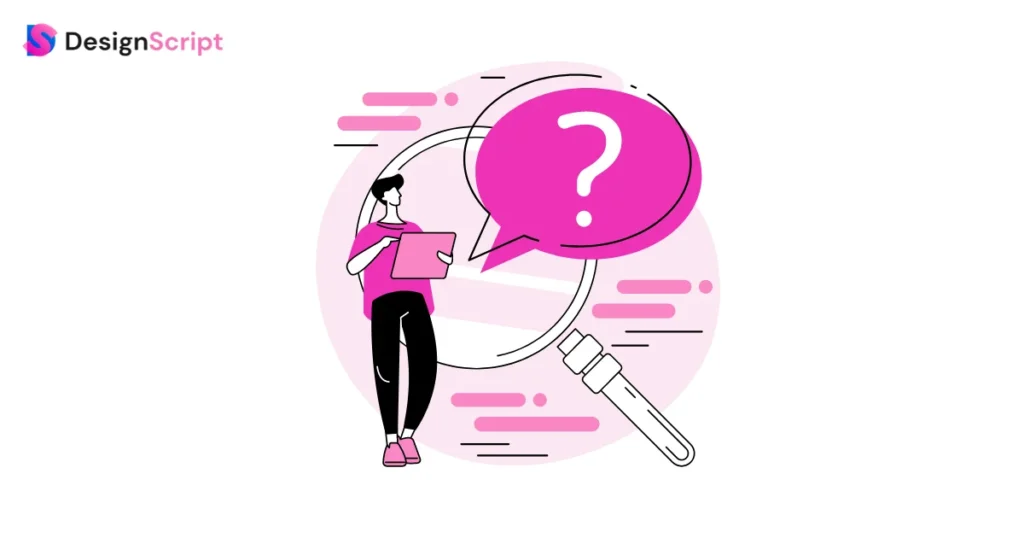
In the discovery stage of the marketing funnel, the content attracts visitors to know more about your brand. In the consideration stage, the content nurtures leads. In the last stage, the content lures them into making a purchase.
Here are the stages of an inbound content marketing funnel:
Top of the funnel – aims at attracting new visitors.
Middle of the funnel – aims at converting them into leads.
Bottom of the funnel – aims at closing sales with them.
Top of the funnel content marketing aims at creating brand awareness. The content at this stage is informative & educational so that the target audience gets familiar with your product or service.

